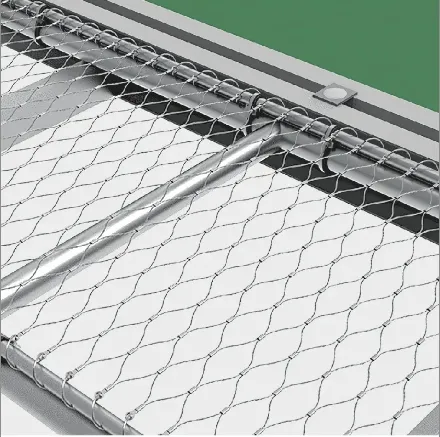- Industrial zone, South of Anping Town, Hengshui, Hebei, China.
- sales@hfpetromesh.com
- +86-18931809706
 Afrikaans
Afrikaans  Albanian
Albanian  Amharic
Amharic  Arabic
Arabic  Armenian
Armenian  Azerbaijani
Azerbaijani  Basque
Basque  Belarusian
Belarusian  Bengali
Bengali  Bosnian
Bosnian  Bulgarian
Bulgarian  Catalan
Catalan  Cebuano
Cebuano  Corsican
Corsican  Croatian
Croatian  Czech
Czech  Danish
Danish  Dutch
Dutch  English
English  Esperanto
Esperanto  Estonian
Estonian  Finnish
Finnish  French
French  Frisian
Frisian  Galician
Galician  Georgian
Georgian  German
German  Greek
Greek  Gujarati
Gujarati  Haitian Creole
Haitian Creole  hausa
hausa  hawaiian
hawaiian  Hebrew
Hebrew  Hindi
Hindi  Miao
Miao  Hungarian
Hungarian  Icelandic
Icelandic  igbo
igbo  Indonesian
Indonesian  irish
irish  Italian
Italian  Japanese
Japanese  Javanese
Javanese  Kannada
Kannada  kazakh
kazakh  Khmer
Khmer  Rwandese
Rwandese  Korean
Korean  Kurdish
Kurdish  Kyrgyz
Kyrgyz  Lao
Lao  Latin
Latin  Latvian
Latvian  Lithuanian
Lithuanian  Luxembourgish
Luxembourgish  Macedonian
Macedonian  Malgashi
Malgashi  Malay
Malay  Malayalam
Malayalam  Maltese
Maltese  Maori
Maori  Marathi
Marathi  Mongolian
Mongolian  Myanmar
Myanmar  Nepali
Nepali  Norwegian
Norwegian  Norwegian
Norwegian  Occitan
Occitan  Pashto
Pashto  Persian
Persian  Polish
Polish  Portuguese
Portuguese  Punjabi
Punjabi  Romanian
Romanian  Russian
Russian  Samoan
Samoan  Scottish Gaelic
Scottish Gaelic  Serbian
Serbian  Sesotho
Sesotho  Shona
Shona  Sindhi
Sindhi  Sinhala
Sinhala  Slovak
Slovak  Slovenian
Slovenian  Somali
Somali  Spanish
Spanish  Sundanese
Sundanese  Swahili
Swahili  Swedish
Swedish  Tagalog
Tagalog  Tajik
Tajik  Tamil
Tamil  Tatar
Tatar  Telugu
Telugu  Thai
Thai  Turkish
Turkish  Turkmen
Turkmen  Ukrainian
Ukrainian  Urdu
Urdu  Uighur
Uighur  Uzbek
Uzbek  Vietnamese
Vietnamese  Welsh
Welsh  Bantu
Bantu  Yiddish
Yiddish  Yoruba
Yoruba  Zulu
Zulu
- Afrikaans
- Albanian
- Amharic
- Arabic
- Armenian
- Azerbaijani
- Basque
- Belarusian
- Bengali
- Bosnian
- Bulgarian
- Catalan
- Cebuano
- Corsican
- Croatian
- Czech
- Danish
- Dutch
- English
- Esperanto
- Estonian
- Finnish
- French
- Frisian
- Galician
- Georgian
- German
- Greek
- Gujarati
- Haitian Creole
- hausa
- hawaiian
- Hebrew
- Hindi
- Miao
- Hungarian
- Icelandic
- igbo
- Indonesian
- irish
- Italian
- Japanese
- Javanese
- Kannada
- kazakh
- Khmer
- Rwandese
- Korean
- Kurdish
- Kyrgyz
- Lao
- Latin
- Latvian
- Lithuanian
- Luxembourgish
- Macedonian
- Malgashi
- Malay
- Malayalam
- Maltese
- Maori
- Marathi
- Mongolian
- Myanmar
- Nepali
- Norwegian
- Norwegian
- Occitan
- Pashto
- Persian
- Polish
- Portuguese
- Punjabi
- Romanian
- Russian
- Samoan
- Scottish Gaelic
- Serbian
- Sesotho
- Shona
- Sindhi
- Sinhala
- Slovak
- Slovenian
- Somali
- Spanish
- Sundanese
- Swahili
- Swedish
- Tagalog
- Tajik
- Tamil
- Tatar
- Telugu
- Thai
- Turkish
- Turkmen
- Ukrainian
- Urdu
- Uighur
- Uzbek
- Vietnamese
- Welsh
- Bantu
- Yiddish
- Yoruba
- Zulu
floor grating
Understanding Floor Grating An Essential Component in Modern Construction
Floor grating is a versatile and functional material that has become an essential component in various construction and industrial applications. This type of grating is typically made out of steel, aluminum, or fiberglass and is designed to provide a strong, durable surface while allowing for drainage, ventilation, and light penetration. Its unique structure makes it ideal for use in walkways, platforms, and stairways where safety and accessibility are paramount.
One of the primary benefits of floor grating is its ability to provide slip resistance. Many forms of grating, particularly those made from steel, are designed with a variety of surface textures, making them less slippery even when wet. This attribute is particularly crucial in industrial environments, where spills are common, and accidents can lead to severe injuries. By incorporating grating into the design of workspaces, businesses can enhance safety and compliance with occupational health standards.
Another significant advantage of floor grating is its lightweight and modular nature. The panels can be easily transported, installed, and modified, allowing for flexibility during construction or renovation projects. This adaptability is particularly important in dynamic industries, such as manufacturing or oil and gas, where operational needs can change rapidly. Floor grating systems can be quickly reconfigured to meet these evolving demands, making them a practical solution for many applications.
floor grating

Moreover, floor grating allows for efficient drainage of liquids, helping to prevent pooling and potential hazards
. In environments where spills or leaks are possible, such as chemical plants or food processing facilities, the open design of grating facilitates quick runoff, reducing the risk of contamination or slipping incidents. This feature not only promotes safety but also supports the maintenance of hygiene standards in sensitive environments.Another aspect worth noting is the aesthetic appeal of floor grating. While functionality is undoubtedly essential, modern designers are increasingly incorporating grating into more aesthetic applications, such as in outdoor spaces and public areas. Grating can be an attractive solution for walkways in gardens or parks, offering both practicality and visual appeal. The ability for light to pass through can also create stunning visual effects, enhancing the architectural design of a space.
Finally, the environmental impact of floor grating cannot be overlooked. Many manufacturers emphasize the use of recycled materials in their products, contributing to sustainable building practices. Additionally, the longevity and durability of grating reduce the need for frequent replacements, thus minimizing waste.
In conclusion, floor grating is a multifaceted material that plays a crucial role in various construction and industrial applications. With its slip-resistant properties, flexibility, efficient drainage capabilities, aesthetic versatility, and environmental sustainability, floor grating stands as a pillar of modern construction practices. As industries continue to evolve, the role of floor grating will undoubtedly expand, accommodating new designs and safety standards in the built environment.
-
Welded Steel Bar Grating: The Rugged Industrial Flooring Solution Built for Load and LongevityNewsJun.24,2025
-
Steel Walkway Grating: Reliable, Resilient, and Built for Every StepNewsJun.24,2025
-
Shale Shaker Screen for Sale: Optimize Drilling Efficiency with Precision Screening PowerNewsJun.24,2025
-
Shaker Screen for Sale: Elevate Your Drilling Efficiency with Durable Separation SolutionsNewsJun.24,2025
-
Press Locked Steel Grating: Industrial Strength with Precision Fit for Heavy-Duty ApplicationsNewsJun.24,2025
-
Perimeter Safety Netting: The Critical Safety Upgrade for Every HelipadNewsJun.24,2025